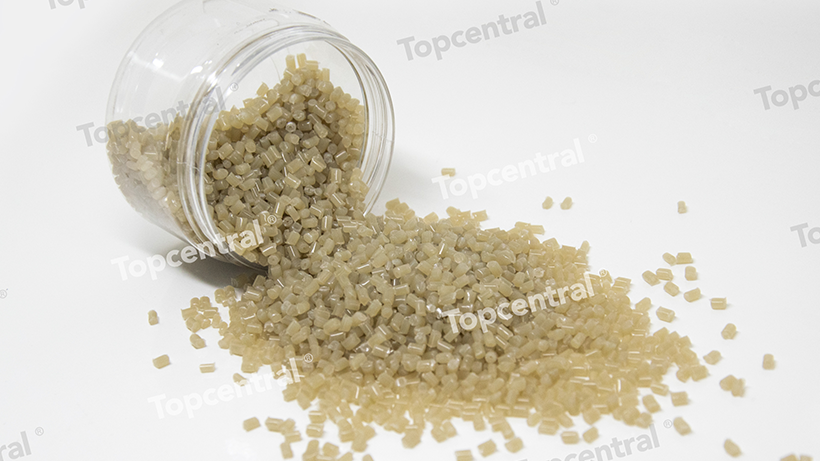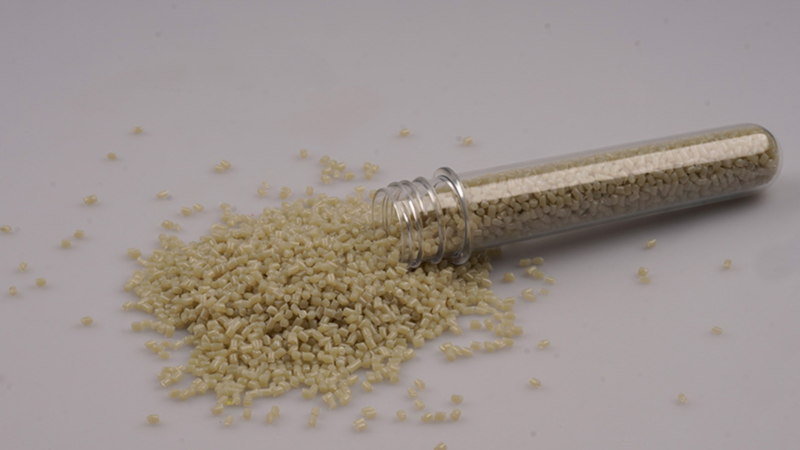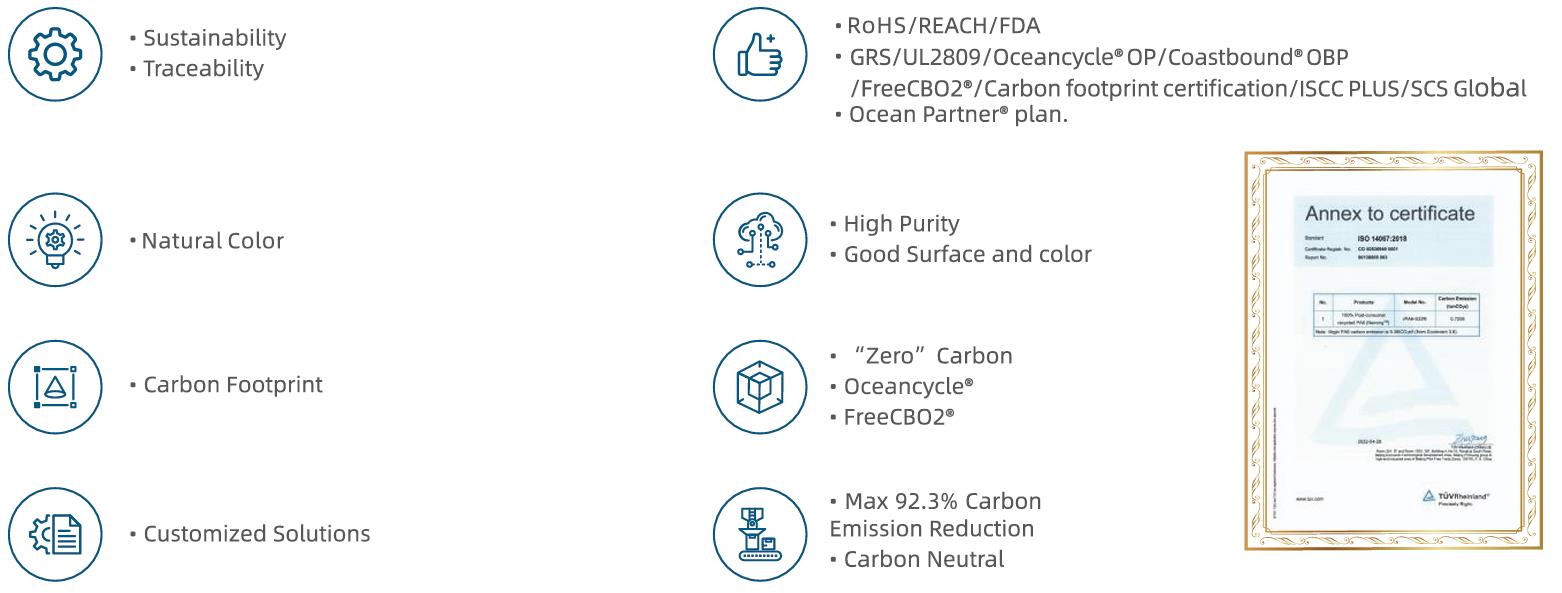
Recycled Nairong® rPA6 was prepared through pretreatment and standardized granulation modification based on post consumption recycled fishing net sik, automobile, low-voltage electrical appliances and so on, Natural color and black products, and customized products such as Coastbound® nylon 6 and oceancycle® nylon 6 can ben provided Products can be used inniection molding, compounding, spinning, extrusion and some other fields. A-round customized system solutions andinnovative solutions also can be provided according to specialrequirements.



| Typical Grade | rPA6-S22N | rPA6-S240N | rPA6-S280N | rPA6-N028AS | rPA6-N025AS | rPA6-6BG | rPA6-3BG |
|---|---|---|---|---|---|---|---|
| R.V., 25°C | 2.4-3.0 | 2.2-2.8 | 3.0-3.8 | 2.6-3.0 | 2.2-2.6 | / | / |
| IZOD Impact Strength, KJ/m² | 5 | 5 | 6 | 5 | 5 | 7 | 5 |
| Tensile Strength, MPa | 55 | 55 | 60 | 55 | 55 | / | / |
| Flexural Strength, MPa | 85 | 85 | 90 | 90 | 90 | 150 | 90 |
| Appearance | Natural | Natural | Natural | Natural | Natural | Black | Black |
| Certification | GRS/UL2809 /UL OBP/ SCS Global/carbon zero | GRS/UL2809/UL OBP/ SCS Global/SCC PLUS | GRS/UL2809 /OBP | / | / | / | / |
| Characteristic | Coastbound® OBP FreeCB02 | Coastbound® OBP | Coastbound® OBP | / | / | / | / |
| Application | Compounding, Injection | Compounding, Injection | Compounding, Spinning, Injection | Compounding, Injection | Compounding, Injection | Injection | Injection |
| Carbon emissions ton CO2e | 0.7208(PCF C) | 0.7023 | 0.7839 | 0.7617 | 0.7015 | 0.761 | 0.7019 |
Topcircle®,TCycleEP®, Nairong",FreeCB02*, Oceancycle", Coastbound*OBP, Ocean Partner°;

Can be used in down-stream compounding and various mechanical parts, also can be used in iniection molding, spinning. and so on.


We offer a wide variety of materials, including general plastics, engineering plastics, and specialty plastics, covering almost all types of recycled polymers.

With a dedicated R&D team, we continuously innovate and develop high-performance, customized material solutions to meet diverse industry needs.

From research and testing to manufacturing and sales, we provide end-to-end solutions, streamlining the supply chain for our clients.

Our products promote low-carbon, circular economy practices,supporting global sustainability efforts with bio-based and degradable materials.
Sustainable low - carbon functional materials are applied across numerous critical areas. In the energy sector, they are pivotal. For instance, advanced photovoltaic materials with low - carbon manufacturing processes are used to construct more efficient solar panels. These materials enhance the conversion of sunlight into electricity, contributing to the expansion of renewable energy sources and reducing reliance on fossil fuels.
In the textile industry, sustainable low - carbon functional materials are making waves. Bio - based and recycled fibers are being used to create fabrics. These materials not only consume less energy during production but also have a lower environmental impact compared to traditional synthetic fibers. Moreover, some functional textiles made from these materials can regulate body temperature, repel water, or provide UV protection, all while maintaining a low - carbon footprint.
In the textile industry, sustainable low - carbon functional materials are making waves. Bio - based and recycled fibers are being used to create fabrics. These materials not only consume less energy during production but also have a lower environmental impact compared to traditional synthetic fibers. Moreover, some functional textiles made from these materials can regulate body temperature, repel water, or provide UV protection, all while maintaining a low - carbon footprint.


